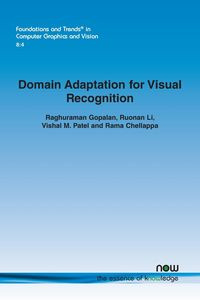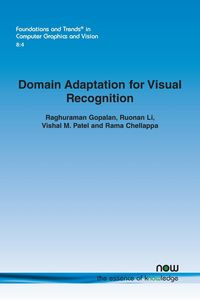Domain Adaptation for Visual Recognition - Gopalan Raghuraman
Domain Adaptation for Visual Recognition - Gopalan Raghuraman
AutorzyGopalan Raghuraman
EAN: 9781680830309
Marka
Symbol
045ESZ03527KS
Rok wydania
2015
Elementy
110
Oprawa
Miekka
Format
15.6x23.4cm
Język
angielski

Bez ryzyka
14 dni na łatwy zwrot

Szeroki asortyment
ponad milion pozycji

Niskie ceny i rabaty
nawet do 50% każdego dnia
Niepotwierdzona zakupem
Ocena: /5
Marka
Symbol
045ESZ03527KS
Kod producenta
9781680830309
Autorzy
Gopalan Raghuraman
Rok wydania
2015
Elementy
110
Oprawa
Miekka
Format
15.6x23.4cm
Język
angielski

Domain adaptation is an active, emerging research area that attempts to address the changes in data distribution across training and testing datasets. With the availability of a multitude of image acquisition sensors, variations due to illumination and viewpoint among others, computer vision applications present a very natural test bed for evaluating domain adaptation methods. This monograph provides a comprehensive overview of domain adaptation solutions for visual recognition problems. By starting with the problem description and illustrations, it discusses three adaptation scenarios, namely, (i) unsupervised adaptation where the "source domain" training data is partially labeled and the "target domain" test data is unlabeled; (ii) semi-supervised adaptation where the target domain also has partial labels; and (iii) multi-domain heterogeneous adaptation which studies the previous two settings with the source and/or target having more than one domain, and accounts for cases where the features used to represent the data in each domain are different. For all of these scenarios, Domain Adaptation for Visual Recognition discusses the existing adaptation techniques in the literature. These techniques are motivated by the principles of max-margin discriminative learning, manifold learning, sparse coding, as well as low-rank representations, and have shown improved performance on a variety of applications such as object recognition, face recognition, activity analysis, concept classification, and person detection.
Domain Adaptation for Visual Recognition concludes by analyzing the challenges posed by the realm of "big visual data" -- in terms of the generalization ability of adaptation algorithms to unconstrained data acquisition as well as issues related to their computational tractability -- and draws parallels with efforts from the vision community on image transformation models and invariant descriptors so as to facilitate improved understanding of vision problems under uncertainty.
EAN: 9781680830309
EAN: 9781680830309
Niepotwierdzona zakupem
Ocena: /5
Zapytaj o produkt
Niepotwierdzona zakupem
Ocena: /5
Napisz swoją opinię

